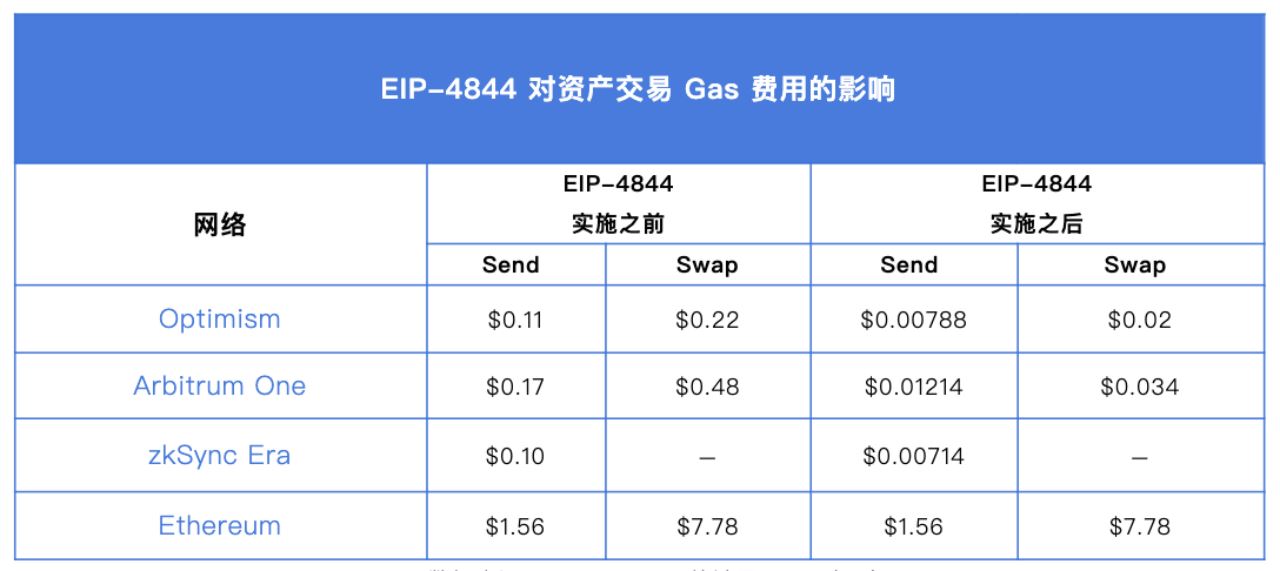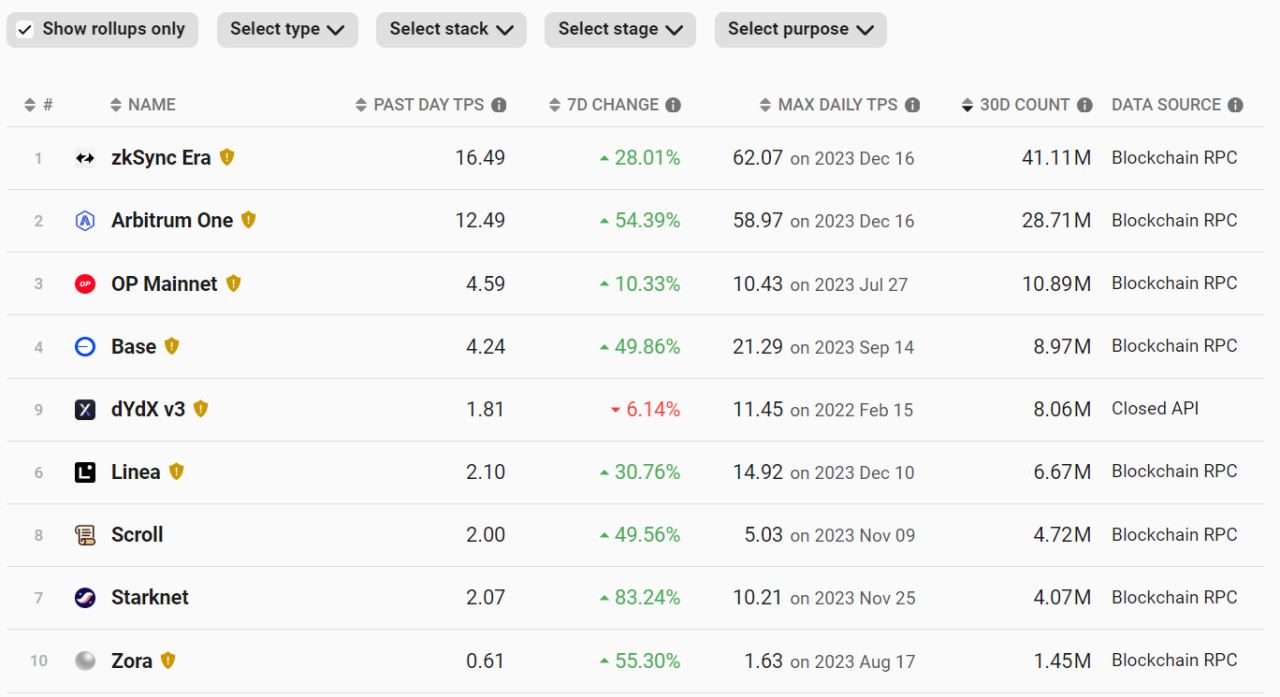On January 12, the U.S. Securities and Exchange Commission (SEC) announced the adoption of a Bitcoin spot ETF. This news is highly anticipated and is considered a milestone event in the cryptocurrency market and is of great significance. However, surprisingly, the market reaction was muted and even the price of Bitcoin began to fall. In the next half month, Bitcoin fell from a peak of $46,000 to less than $40,000, a drop of 13%. This shows that the previous excessive hype on ETF events caused the bubble to burst, and a large amount of funds moved to other public chains and project protocols with new stories.
The progress of Bitcoin ETF has temporarily stalled, and now the market is beginning to pay attention to the Ethereum spot ETF. According to market analysis, the probability of approval in May this year is about 50%. Considering the previous price rise during the warm-up period of Bitcoin ETF, now is the time to pay attention to Ethereum in advance to avoid missing the opportunity of the next wave of mainstream tokens.
Ethereum is about to undergo its next upgrade, called the Cancun upgrade, which is expected to be completed by the end of February. The main goal of this upgrade is to expand the Ethereum main chain to improve its scalability, security and availability. After the upgrade, the TPS of the main chain will increase and the Gas fee will be reduced. This is huge good news for Ethereum’s Layer 2 ecosystem and will help it thrive.
Based on the above two reasons, this issue will explain the Cancun upgrade and analyze the beneficial projects.
The Cancun upgrade is an upgrade to the Ethereum main chain. It is another important update after the Ethereum Shanghai upgrade. The name Cancun comes from a seaside city in Mexico, which is a world-famous resort destination. The choice of this name may be related to the city where the Ethereum Developer Conference (EthCC) is located.
The Cancun upgrade aims to solve one of Ethereum’s core problems – high transaction fees. According to the article "Make Ethereum Cypherpunk Again" published by Buterin in December 2023, the current increase in transaction fees on the blockchain network is one of the reasons why it is limited to asset speculation. High network transaction fees have turned people from users of the blockchain network to speculators. In order to realize the value of blockchain applications, the transaction fees of the blockchain network must be significantly reduced again. Although the emergence of L2 has reduced network fees relative to the Ethereum mainnet, this is still far from enough. Therefore, the Cancun upgrade aims to reduce transaction fees through a series of innovative technologies and mechanisms, so that blockchain networks can be more widely used in various fields and promote their true development and popularity.
This Cancun upgrade is expected to provide multiple enhancements to the Ethereum network:
The introduction of Proto-Danksharding is expected to increase transaction processing speed and transaction volume, Especially for L2 solutions on the main Ethereum blockchain, it has the potential for scalability improvements.
Gas fee reduction: Make transactions more cost-effective by integrating data blobs and activating EIP-4844.
Security Progress: The implementation of EIP-6780 in this upgrade is designed to improve network security measures and provide stronger protection for user data and investments.
Optimized data storage: The implementation of EIP-1153 in this upgrade will bring more efficient blockchain data storage, improve operations and reduce costs, which will simplify dependencies Benefit from second-tier solutions for data management.
Cross-chain enhancements: EIP-4788 in this upgrade is designed to improve the ease of use and security of cross-blockchain interactions and support enhanced and second-layer solutions interoperability.
The core content of the Cancun upgrade is the EIP-4844 protocol - the introduction of Proto-Danksharding, which is an advanced version of Danksharding. This protocol may reduce L2 transaction fees by 10 to 100 times .
Danksharding is a solution. It describes that this solution can design a separate data type Blob for the data returned by L2 (which will be specially used to store the transaction data submitted by L2 to L1). It is separate from Layer1's Calldata. In this way, the Blob data type only needs to be able to be accessed and verified by those who need it within a certain period of time. There is no need for the Layer1 execution layer to execute it all, which will greatly reduce the burden on Layer1.
The Proto-Danksharding introduced in the Cancun upgrade is the first step in the comprehensive expansion of Ethereum. The size of each Blob introduced in this stage is 128 KB, and each Ethereum block is planned to contain 3-6 Blob (0.375 MB - 0.75MB), which will be gradually expanded to 64 in the future. In comparison, the data size that each Ethereum block can currently hold is less than 200KB. After the introduction of Blobs, the amount of data that Ethereum blocks can hold will be significantly increased. Therefore, Proto-Danksharding will lay the foundation for further realizing complete Danksharing, introducing the separation of block proposers and builders, and implementing data availability sampling.
The specific content of this Cancun upgrade (completed technical improvements):
Introduction of Blob transactions: Blob is the abbreviation of Binary Large Object. Blob transactions are a new transaction type that will be used in future sharding.
Introduce all execution layer logic required to implement future full sharding.
Introduces cross-validation logic for all execution and consensus layers required to implement future full sharding.
Implements layering between beacon block verification (i.e. Ethereum layer 2 data) and blob data availability sampling.
Introduces beacon blocks to implement most of the logic required for future full sharding.
For this upgrade, it is actually directly beneficial to the entire L2 ecology. According to I2fees.info on 2023/12 The statistical results of /11 show that the introduction of Blob has significantly reduced L2 transaction fees and improved throughput to a certain extent. At the same time, it also further promotes the development of the Restake track and DA track projects.


As the leader of Ethereum L2, Arbitrum is currently the L2 with the most diverse types of protocols. . We believe that the reason why Arbitrum can benefit from this upgrade to a great extent is mainly due to the following dimensions:
Large number of protocols: According to incomplete statistics from DeFiLlama, the number of protocols on Arbitrum is approximately 520 216, far exceeding the second-ranked Optimism.
TVL is large: According to L2beat data, Arbitrum’s TVL is currently about 10B, accounting for 49.26% of Ethereum Rollup’s TVL.
Large transaction volume: According to L2beat data, the network transaction volume ranking in the past 30 days shows that Arbitrum has a transaction volume of about 28M, ranking second only to the currency that has not yet been issued and still has a lot of hair. Active zkSync, and leads the Optimism network with nearly 3 times the off-block transaction volume.

Based on the above three points, Arbitrum, which is firmly at the forefront in terms of magnitude, can obviously benefit more from the reduction in transaction fees. As a bonus, the optimization of TPS is also conducive to the prosperity of the protocol ecology with higher performance requirements such as GMX and GNS on Arbitrum. From a network fundamentals perspective, Arbitrum is undoubtedly one of the biggest beneficiaries of the Cancun upgrade.
The above is the detailed content of Ethereum Cancun upgrade: Which projects have a positive impact?. For more information, please follow other related articles on the PHP Chinese website!
 What to do if the Bluetooth switch is missing in Windows 10
What to do if the Bluetooth switch is missing in Windows 10
 Network topology diagram
Network topology diagram
 Introduction to the role of cloud servers
Introduction to the role of cloud servers
 What are the operators in Go language?
What are the operators in Go language?
 MySQL password change method
MySQL password change method
 MySQL changes the storage engine method of a table
MySQL changes the storage engine method of a table
 Baidu keyword optimization software
Baidu keyword optimization software
 Projector mobile phone
Projector mobile phone




